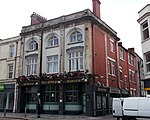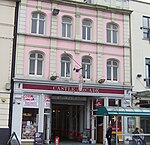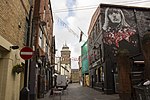Cardiff Castle

Cardiff Castle (Welsh: Castell Caerdydd) is a medieval castle and Victorian Gothic revival mansion located in the city centre of Cardiff, Wales. The original motte and bailey castle was built in the late 11th century by Norman invaders on top of a 3rd-century Roman fort. The castle was commissioned either by William the Conqueror or by Robert Fitzhamon, and formed the heart of the medieval town of Cardiff and the Marcher Lord territory of Glamorgan. In the 12th century the castle began to be rebuilt in stone, probably by Robert of Gloucester, with a shell keep and substantial defensive walls being erected. Further work was conducted by the 6th Earl of Gloucester in the second half of the 13th century. Cardiff Castle was repeatedly involved in the conflicts between the Anglo-Normans and the Welsh, being attacked several times in the 12th century, and stormed in 1404 during the revolt of Owain Glyndŵr. After being held by the de Clare and Despenser families for several centuries, the castle was acquired by The 13th Earl of Warwick and Comte de Aumale in 1423. Lord Warwick conducted extensive work on the castle, founding the main range on the west side of the castle, dominated by a tall octagonal tower. Following the Wars of the Roses, the status of the castle as a Marcher territory was revoked and its military significance began to decline. The Herbert family took over the property in 1550, remodelling parts of the main range and carrying out construction work in the outer bailey, then occupied by Cardiff's Shire Hall and other buildings. During the English Civil War Cardiff Castle was initially taken by a Parliamentary force, but was regained by Royalist supporters in 1645. When fighting broke out again in 1648, a Royalist army attacked Cardiff in a bid to regain the castle, leading to the Battle of St Fagans just outside the city. Cardiff Castle escaped potential destruction by Parliament after the war and was instead garrisoned, probably to protect against a possible Scottish invasion. In the mid-18th century, Cardiff Castle passed into the hands of the Stuart dynasty, Marquesses of Bute. John, 1st Marquess of Bute, employed Capability Brown and Henry Holland to renovate the main range, turning it into a Georgian mansion, and to landscape the castle grounds, demolishing many of the older medieval buildings and walls. During the first half of the 19th century the family became extremely wealthy as a result of the growth of the coal industry in Glamorgan. However, it was the 3rd Marquess of Bute who truly transformed the castle, using his vast wealth to back an extensive programme of renovations under William Burges. Burges remodelled the castle in a Gothic revival style, lavishing money and attention on the main range. The resulting interior designs are considered to be amongst "the most magnificent that the gothic revival ever achieved". The grounds were re-landscaped and, following the discovery of the old Roman remains, reconstructed walls and a gatehouse in a Roman style were incorporated into the castle design. Extensive landscaped parks were built around the outside of the castle. In the early 20th century, the 4th Marquess of Bute inherited the castle and construction work continued into the 1920s. The Bute lands and commercial interests around Cardiff were sold off or nationalised until, by the time of the Second World War, little was left except the castle. During the war, extensive air raid shelters were built in the castle walls; they could hold up to 1,800 people. When the 4th Marquess died in 1947, the castle was given to the City of Cardiff. Today the castle is run as a tourist attraction, with the grounds housing the "Firing Line" regimental museum and interpretation centre. The castle has also served as a venue for events, including musical performances and festivals.
Excerpt from the Wikipedia article Cardiff Castle (License: CC BY-SA 3.0, Authors, Images).Cardiff Castle
Kingsway, Cardiff Castle
Geographical coordinates (GPS) Address Nearby Places Show on map
Geographical coordinates (GPS)
| Latitude | Longitude |
|---|---|
| N 51.4823 ° | E -3.1812 ° |
Address
Cardiff Castle and Roman Fort
Kingsway
CF10 3HH Cardiff, Castle
Wales, United Kingdom
Open on Google Maps










